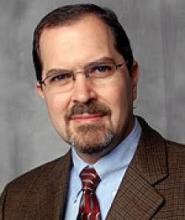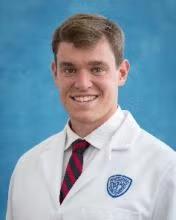As Ron Triolo, PhD, turned up the nerve stimulator in his lab at the Louis Stokes Cleveland Veterans Affairs Medical Center, the research trial participant connected to the machine immediately perked up.
“That’s my big toe!” he said. “If I had a big toe.”
The trial participant—a military veteran who had lost his leg after stepping on a landmine in Vietnam 50 years ago—was like so many others. Triolo, a professor of orthopedics and biomedical engineering at Case Western Reserve University School of Medicine, has worked with across more than 25 years. They are paralyzed by spinal cord injuries, stroke or multiple sclerosis, or they’ve lost limbs. But they haven’t lost hope.
Neither has Triolo.
As executive director of the U.S. Department of Veterans Affairs’ Advanced Platform Technology Center, Triolo has overseen the design, prototyping and production of novel medical devices for the rehabilitation of people with sensorimotor impairments or limb loss. He conducts research on the development and clinical application of neuroprostheses and restorative technologies, biomechanics and the control of movement, rehabilitation engineering and assistive technology.
For people like the military veteran, Triolo and his research team have used implanted electrodes to stimulate sensory nerves associated with lost limbs, which then carry a message to the spinal cord and brain that generate perceptions of sensation related to what the missing limbs would be feeling if they were still there.
“It’s like a pacemaker for your nerves or muscles,” he explained. “We kind of fool the brain into thinking the stimulation of the nerves can elicit a perception of touch or pressure related to the phantom limb. The user can feel their ‘phantom’ feet touching the floor and tell how much pressure is being placed on it at various locations from the heel to the toes. This makes a big difference to the ability to balance, walk over differ-ent surfaces or adjust walking speed without looking at—or paying a lot of attention to—the prosthesis.”
With this technology, Triolo and his team of investigators have enabled people with paraplegia to rise from their wheelchairs, and even walk short distances with little or no assistance.
“I don’t like to say we’re restoring function, sensation or the ability to stand,” he said. “What we’re doing is giving people Triolo an option to stand, step or interact with the world differently than they would have before their injury. That option was off the table until our technology became part of their lives.”
Stimulating Discoveries
Triolo’s work with amputees grew out of earlier research— still ongoing—in which he aims to improve life for people with spinal cord injuries by enabling exercise.
People with spinal cord in- juries—which cause paralysis— are at elevated risk for heart attack, heart failure and atrial fibrillation, researchers reported in Journal of the American College of Cardiology earlier this year. And because paralysis leads to immobility, they’re not likely to get the level of cardio exercise they need to help avoid these problems.
“Sitting kills, moving heals, right?” Triolo said. “But if you’re paralyzed, you don’t have many options to exercise.”
So, he thought, how could he help people with paralysis exercise with more intensity and cardiovascular benefits?
Stimulation-based rowing and cycling has been around for several years, but Triolo saw an opportunity to perfect them.
To achieve a more effective rowing and cycling pattern, he placed sensors on the handles and pedals, which allows the nerve stimulator to fire in time with the movement to contract the right muscles at the right time. This technology allows the user to exercise their otherwise dormant muscles, which are still healthy and capable of movement—just severed from the message centers of the nervous system.
The result: The user feels more “at one with the machine” while reaping all the well-understood benefits of cardiovascular exercise, including on mental health.
From Lab to Living Room
With 10 participants now in the study, this project is growing and attracting a lot of attention—including from a few medical students.
Alexander Richards, a member of the CWRU Crew team, met Triolo at the Cleveland Rowing Foundation boathouse at the end of his first year in medical school. He saw two trial participants using the adaptive rowing machines at the lab and told Triolo, “If I didn’t know, I’d think they were about to head out for a row on the river!”
Richards, who competed in the 2021 Olympics in Tokyo as a member of the U.S. Men’s Eight rowing team, is now a third- year MD student. He loved the combination of science and sport—but especially that it made rowing more accessible.
“These participants, who had minimal or no control over their lower limbs, were rowing full strokes with their arms, backs and legs,” Richards recounted. “Aside from the wires and stimulation pads attached to their Richards quads and hamstrings, one would have a hard time knowing the extent of their injuries.”
This year, Richards will be working in Triolo’s lab, where he hopes to conduct his own study that compares the biomechanics of nonstimulation-based rowing with stimulation-based rowing.
Triolo hopes to involve even more students in the years ahead, especially as they expand the capabilities of assistive technology. That includes building virtual reality platforms so people can row on the river or in teams—from the comfort of their homes. They’re also experimenting with e-bike prototypes that use tilt sensors to assist riders with inclines.
“If we can put [these machines] in people’s homes or organize a para-rowing club so people with disabilities can get out on the water and exercise, have fun and build a community,” he said, “that’ll make everybody healthier—including our society.”



